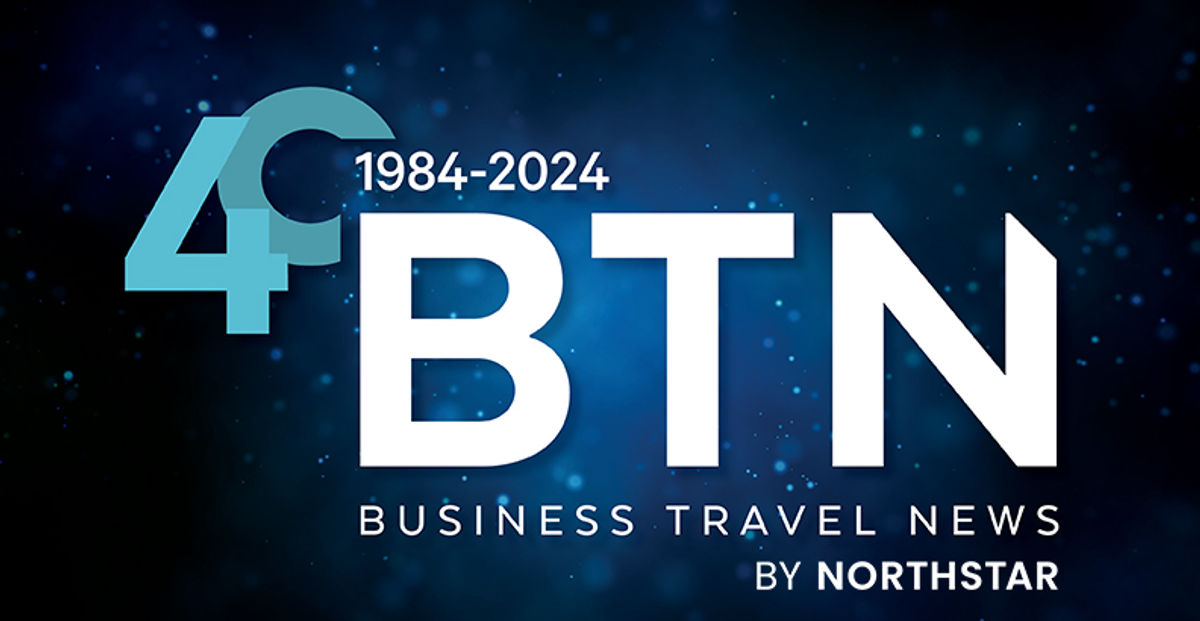Travel
Travel Management in the Time of Transformation

Amazon topped BTN’s 2024 Corporate Travel 100 list of
companies spending big on business travel, according to their full-year
U.S.-originating travel spend for 2023, which BTN estimates held steady year
over year at $483 million. There were some movers on the list—PwC jumped from
No. 16 to No. 4 with nearly double the air volume from the previous year;
Walmart jumped 13 spots to No. 31, increasing its previous year’s air volume by
50 percent.
Tactical Traction on Sustainability Measures
Carbon emissions are on the rise for many companies on BTN’s
2024 Corporate Travel 100. It’s not for lack of awareness around the issue, but
simply a fact of life that increased business travel is translating into increasing
emissions. By some measures the optics still look good: the mitigation
activities put in place since 2019 have resulted in good comparisons in the
five-year view. Alternatively, companies are starting to look at carbon
intensity levels for business travel—as measured by some kind of ratio. Often,
it’s carbon emissions per travel dollar spent, carbon emissions per traveler
or, more generally, carbon emissions per company employee. One company among
the CT100, however, “retired” its business travel carbon goals in 2023,
realizing they wouldn’t meet their 2025 goals and with the intention to focus
their energy on more “material” factors in their organization.
Several CT100 buyers meeting in New York last week said
“materiality” was impacting their company’s focus on business travel emissions.
The fact that travel contributed so little to the overall carbon footprint made
it strategically inconsequential to focus on it as a company beyond a checkbox
exercise or giving it some weight in the sourcing process. That said, many
companies among the CT100 aggressively were pursuing business travel emissions reduction
for, and here’s where they focused their efforts:
Alternative Airline Fuel – Many companies in the
CT100 had invested in alternative airline fuels. Some of the most significant
were Deloitte, Google, Bank of America and Shell.
Travel Approvals – A handful of companies had shifted
their demand management strategies to a carbon usage lens, requiring all travel
to be justified in terms of travel purpose and carbon emissions. Note EY, specifically
for its STAT tool.
Carbon Pricing – Companies like Meta, KPMG, Bank of
America and others are implementing carbon pricing or “green premiums” on
business travel bookings. The most advanced systems offer dynamic carbon
pricing based on estimated emissions at the time of booking. Others are using
flat fees.
Carbon Budgets – In some ways the opposite of carbon
pricing, carbon budgets set a limit on emissions for an individual or division,
and hold them to it. How that budget is spent is up to the manager and the
business needs. Check PwC’s effort in Canada.
Individual Carbon Footprints – Education and the
concept of “visual guilt” might be in play at Salesforce and McKinsey. Both
companies are exposing individual carbon footprints to travelers as a heads-up
before travel.
These companies weren’t the only ones trading on higher
travel spend last year. Consulting giant Deloitte, which came in at No. 2, was
up by $15 million in U.S.-originating air spend, which is just 5 percent of its
total air spend now. The firm’s total U.S. travel spend is more than $1
billion.
That’s a lot of spending power, and CT100 companies overall
spent more in 2023 on travel than they did in 2022. The median U.S.-booked air spend
for companies on BTN’s list this year hit right around $75 million—that’s $10
million more than last year’s median spend. The lowest rung on the ladder this
year was Hewlett Packard at $26.5 million in U.S.-booked air spend, whereas
last year’s floor was just $15 million in a market that was still very much in
the midst of recovering business-travel-as-usual activities. That oft-remarked-upon
lag in business travel recovery for the large market was on full display in the
full-year 2022 data.
Today Is a Different Day
Large enterprises have left the Covid-19 era behind.
Everyone is operating in the here and now, with a clear-eyed approach to travel
budgets, program optimization and supplier management. A recent meeting among
Corporate Travel 100 travel managers, hosted by BTN in New York, found
companies focused on costs, for sure, but also intently on the business
traveler experience. What “traveler experience” actually comprised, however, clearly
was in transition among the buyers in the room.
For some, traveler experience still was a question of
measuring interactions, response times and effectiveness of travel management
company interactions. There were noted movements to what TMCs are now calling
“global hubs”—with each of the majors rolling out some configuration of the
service model, which among other benefits allows travelers to call or chat into
agents who can service a booking regardless of where it originated. Other cited
benefits included upgraded telephony systems, enhanced with artificial
intelligence, to recognize traveler or arranger phone numbers and then route
them to the best possible agent to service the anticipated need.
Streamlining those agent-assisted requirements was one
talking point across a spectrum of traveler experience issues that included
irregular operations recovery and measuring travel suppliers against on-time
performance (for airlines) or on-property experiences (for hotels). But one
concept particularly stood out—and that was the idea that traveler experience
might be determined by the absence of itinerary touches and the absence of
special services.
That wouldn’t just be the result of smooth sailing or lack
of itinerary changes. Tech-minded CT100 buyers were in the market for deep
automation, self-service options and personalization within their travel
search, booking and service platforms that would obviate the need to call or
interact with an agent.
“We want to measure traveler satisfaction by lowering the
number of times the traveler needs to reach out to the agency in the booking
process or if they need to change their itinerary,” said one CT100 buyer. “We
want our travelers to be able to use technology and self-service tools, just
like they do in the context of consumer travel.”
And that’s not just an initial “touchless transaction”—CT100
buyers are talking about going touchless throughout the journey.
To that end, a prevalence of CT100 companies are looking to
their travel providers—and particularly their agencies—for innovation
implementation throughout their travel platforms. They want better profile
systems that drill into loyalty numbers and build a dynamic picture of the
traveler based on their historic bookings. They want full content delivered
from multiple channels and—hey there, airlines—they want those customized
bundles you promised as a result of New Distribution Capability, along with
whatever cost savings they can realize from continuous pricing.
The thing is—unless corporate buyers can get visibility into
travelers’ loyalty status, they are hard-pressed to know what they ought to
negotiate for those bundles and how to apply them strategically to their
programs. So they are looking for air partners to work out how to share that
information.
“They say they can’t do it because of [personally
identifiable information],” said one CT100 buyer. “But we have protocols to
share PII data, and we do it all the time.”
The loyalty recognition, booking and amenity choices and
after-the-purchase changes should all be available via intuitive self-service for
straightforward trips and enabled through mobile devices, whether by chat or
quick-click prompts, they said.
Not all travel managers are getting aggressive with technology
solutions, but some who are have gotten serious about it. Companies like
Amazon, Chevron, GE, Meta and Walmart reportedly are pushing for new levels of
optimization—some have changed travel management companies to pursue better
solutions, others are open to doing so if their current partners can’t deliver.
As sophisticated buyers, they are well aware of the drivers
in play.
GE was particularly well-positioned to pursue change, as the
company separated in 2023 into independently operating companies GE Aerospace,
GE Vernova and GE Healthcare, each with separate travel programs. The companies
reportedly tapped into their incumbent TMC’s partnership with new
tech-challenger Spotnana to provide their respective travel management
platforms; Meta did the same and Walmart late last year began shifting its
travelers into the same technology.
Will the CT100 Throw Their Weight Around?
A number of these innovators are CWT clients and stand to be
impacted by the proposed $570 million acquisition of CWT by American Express
Global Business Travel. The proposal remains under an escalated scrutiny
process with the U.K.
Competition and Markets Authority.
Several companies, including Google, which had been a
long-standing client of CWT have left its client roster over the past several
years, opting instead for another of the megas. Eight years ago, CWT claimed 22
of the CT100 companies. As of year-end 2023, it was down to 12 that BTN could
positively identify.
Among the CT100 clients remaining with CWT, at least a third
of them have opted to pilot the Spotnana option, which claims to have rebuilt
managed travel tech from the ground up and has not only been a fast integrator
of NDC direct connects but also operates on an open architecture model that
allows for easier API integration and tech collaboration.
According to two BTN sources with knowledge of current CT100
deals but who requested anonymity due to the sensitive nature of the topic, there
are a few companies prepared to walk away should Amex GBT dismantle the
Spotnana option. “They are keeping their options open,” said one source. With
big dollars in the balance, it’s unclear how that might affect strategic decision-making
at the agency level.
That particular issue will be up to the few, but many CT100
companies are reviewing their tech platforms and experimenting or optimizing
where they can.
Channel Competition Undermines Program Relevance
One of the biggest reasons for tech experimentation is the
toll NDC stands to take on managed travel programs if agencies can’t bring full
content to bear within the booking tools. “I found it cheaper on the
internet”—seemingly the mantra of managed travelers everywhere—has gotten more
intense as continuous pricing and special fares sit on the sidelines of managed
travel for buyers who can’t or won’t integrate NDC. One buyer, speaking in
confidence at the BTN Innovate summit in New York last week, said she compares
in-program to out-of-program prices weekly, and is dismayed by what she
continues to find.
No. 80 Takeda piloted direct-booking strategies to see how
to capture off-channel reservations and feed them back into duty-of-care and
service protocols. Toyota Motor North America is collaborating with Deem on
NDC, Oracle made major headway with GetThere, Sabre and CWT and is saving money.
Salesforce is working toward customized bundles with its airlines, Amex GBT and
Concur T2. Other big companies are looking to change booking tools,
specifically, but did not yet go on the record regarding their searches.
It’s not always just the booking tool, and CT100 buyers
urged airlines and TMCs to find a way to collaborate more effectively to
deliver solutions. But buyers may need to be involved for a while as the
industry continues to transform at this level.
One buyer who has spent upwards of five years transforming
her firm’s program said she continues to sit with tech providers, travel
suppliers and users on a weekly basis to ensure their transformation efforts
are working as designed. “I look forward to the time when we don’t need to meet
every week,” she said, but, for now, that’s the attention managed travel
transformation will take when you’re in the big leagues.









